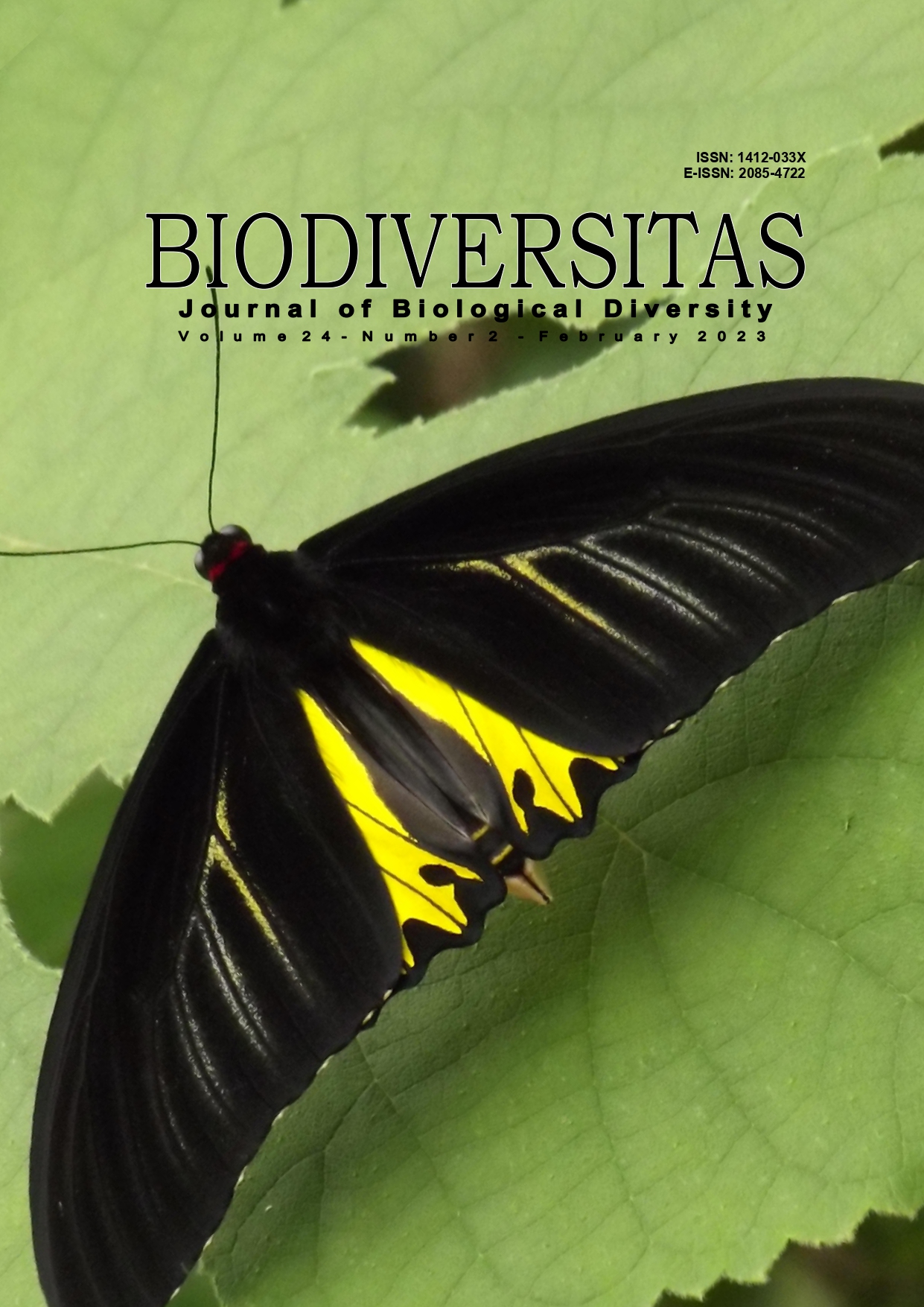Diversity of aquatic plants in the Rote Dead Sea area, East Nusa Tenggara, Indonesia, based on rbcL marker
##plugins.themes.bootstrap3.article.main##
Abstract
Abstract. Lonthor DW, Miftahudin, Kayat, Julzarika A, Subehi L, Iswandono E, Dima AOM, Dianto A, Setiawan F, Nugraha MFI. 2023. Diversity of aquatic plants in the Rote Dead Sea area, East Nusa Tenggara, Indonesia, based on rbcL marker. Biodiversitas 24: 810-818. The Rote Dead Sea area in Rote Islands has two freshwater and 24 saltwater lakes. The saltwater lakes have salinity levels varied between 0-100 ppt. Every lake has specific aquatic plant species. Species identification through morphological analysis only has its limitations; therefore, DNA barcoding is a preference due to an effective, accurate, and faster method for species identification. In this study, we used the rbcL marker to identify and analyze the diversity of the aquatic plant species in lakes Ledulu, Oenduy, Oemasapoka, Oesotimori, and Landu Leko. Plants samples' DNA was amplified using rbcL primers, and the amplicons were sequenced. Species identification was based on morphological study and the rbcL sequence database. Diversity analyses were performed based on pairwise genetic distances, analysis of molecular variance, and genetic relationships based on the Kimura 2 parameter. The results showed that all 20 aquatic plants were correctly identified, and high genetic diversity was discovered. AMOVA analysis showed that genetic variations within the population were higher than among the population. All plant species were grouped into four groups based on the phylogenetic tree and fractional component analyses. The species belonging to the certain family were grouped in the same clade and the closely related plant families. The rbcL marker can be used to discriminate aquatic plant species and analyze their genetic diversity and relationships.


 https://orcid.org/0000-0003-4844-1051
https://orcid.org/0000-0003-4844-1051